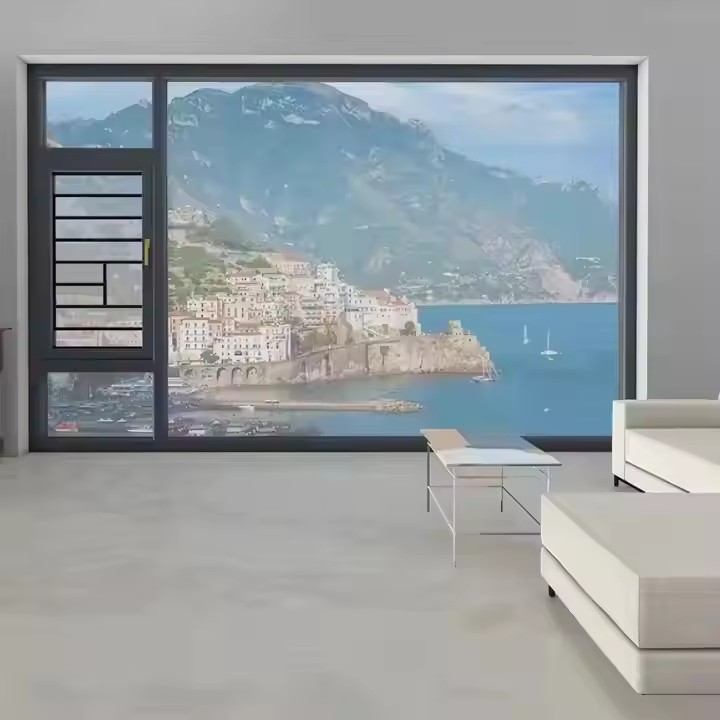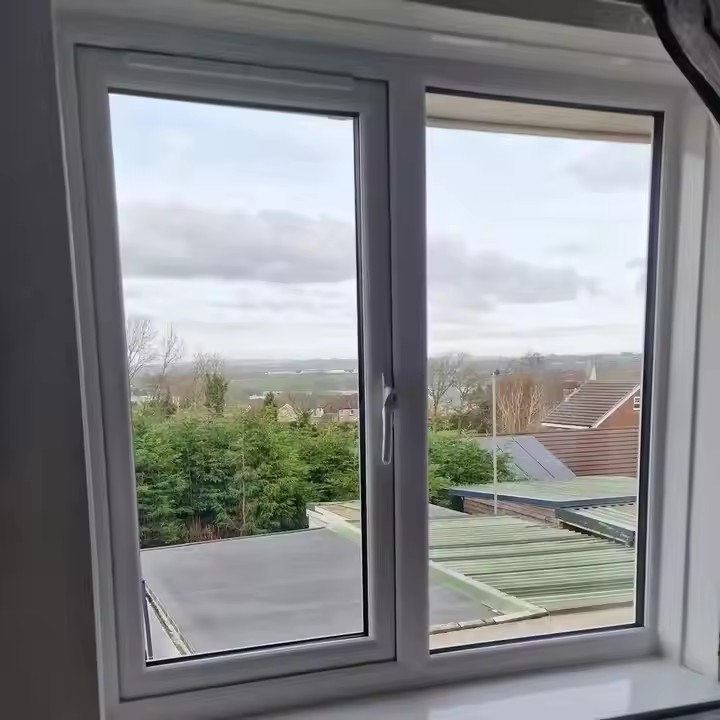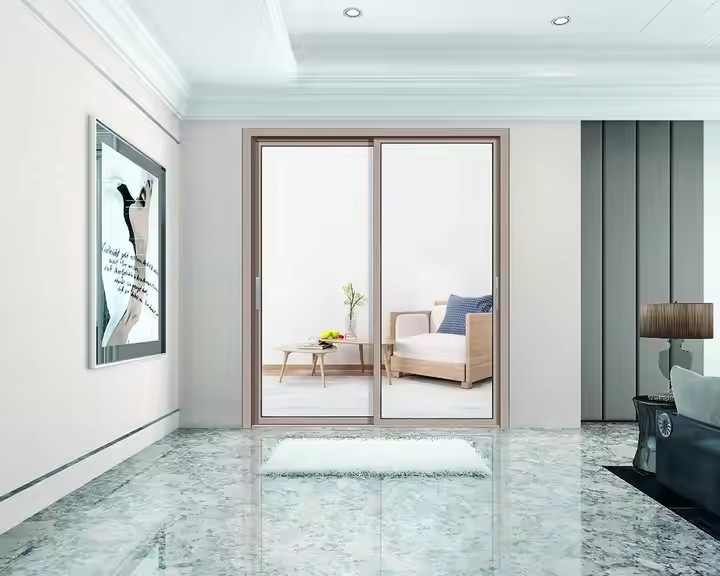- Material Selection: Prioritizing “Weather Resistance” to Withstand Australia’s Harsh Climate Factors
The biggest challenge for folding door materials in Australia comes from three destructive elements: intense UV radiation causing aging, thermal stress from high temperatures, and salt spray corrosion in coastal regions. Therefore, material selection must first overcome the “weather resistance” barrier while balancing energy efficiency and durability.
(1) Frame Material: Preventing Heat Deformation and Corrosion with High-Stability Alloys
Conventional materials often fail in Australian conditions: carbon steel frames rust quickly in coastal cities like Sydney and Brisbane, requiring replacement within 3–5 years; solid wood frames, while aesthetically appealing, crack in the dry inland heat (e.g., Canberra, Adelaide) and develop mold in humid regions (e.g., Cairns), leading to high maintenance costs.
Frames suitable for Australia must meet three key criteria: UV resistance, heat resistance, and corrosion resistance. 6063-T5/T6 aluminum alloy with fluorocarbon coating or super-durable powder coating is the optimal choice:

Base material: With a thermal expansion coefficient of only 23.1×10⁻⁶/℃, 6063-T5/T6 aluminum is far more stable than ordinary metals. Even under 40℃+ summer heat, it resists deformation and joint cracking, ensuring long-term structural integrity.
Coating: PVDF fluorocarbon coating blocks over 90% of UV radiation, preventing fading and peeling (ordinary powder coating visibly ages within 3–5 years, while fluorocarbon lasts 15–20 years). Its salt-spray resistance exceeds 1,000 hours, protecting frames from coastal corrosion and keeping them rust-free.
(2) Glass Material: Balancing Energy Efficiency and Impact Safety Against Heat, UV, and Extreme Weather
Australia’s day–night temperature difference typically reaches 10–15℃ (e.g., Perth in summer: 42℃ daytime, 27℃ at night). UV radiation is 1.5–2× stronger than in the Northern Hemisphere. Single-pane glass cannot block heat, driving up air-conditioning costs, nor can it filter UV, which fades furniture and flooring. In storm-prone regions like North Queensland, ordinary glass lacks impact resistance and poses injury risks.
The solution is double-glazed Low-E tempered glass with argon filling (or triple-glazing in extreme climates):
Energy efficiency: Low-E film reflects 70%+ of infrared heat, reducing indoor temperatures by 5–8℃ in summer and cutting cooling energy use by ~30%. Argon gas in the cavity improves insulation, preventing condensation from temperature swings.
UV protection: Blocks over 90% of UV, extending the lifespan of interior furnishings.
Impact safety: Tempered glass is 5–10× stronger than ordinary glass. Even if broken, it shatters into blunt particles instead of sharp shards. In cyclone-prone areas, laminated interlayers (e.g., PVB) keep fragments bonded, preventing dangerous fallout.
(3) Sealing Components: Withstanding Heat and Cold While Maintaining Long-Term Airtightness
Seals are critical for waterproofing, dustproofing, and soundproofing. Standard PVC seals fail under Australian conditions: they soften and deform in summer heat, causing leaks during storms, and become brittle in winter, losing their sealing effect.
The reliable choice is EPDM rubber gaskets, which provide:
Temperature resistance: Operates from -40℃ to 120℃, covering Australia’s full climate range—from Melbourne’s winter cold to Northern Territory’s summer heat.

UV durability: Rated at level 4+ (out of 5), EPDM resists hardening and cracking under prolonged UV exposure, lasting 10+ years compared to PVC’s 1–2 years.
Sealing performance: With a compression rebound rate of 80%+, EPDM tightly seals gaps, blocking rain, dust, and noise—ideal for the rainy east coast.
- Structural Design: Adapting to Regional Climates While Balancing Safety and Ventilation
Australia’s climate varies greatly (e.g., coastal high winds vs. inland heat, northern storms vs. southern dryness). Folding doors must therefore be tailored to local conditions—offering both extreme-weather resistance and the ability to open fully for ventilation during summer.
(1) Wind-Resistant Structures: Ensuring Stability in Coastal and Cyclone-Prone Areas
The east coast (Sydney, Gold Coast) and the northwest (Darwin) frequently face strong winds and tropical cyclones, with gusts exceeding 100 km/h. If the “panel–track–frame” connections lack stability, ordinary folding doors may wobble, deform, or even collapse. Reinforced wind-resistance is essential for coastal installations.

